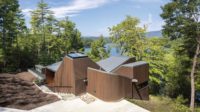Libeskind Museum Strikes a Balance Between Old and New

Libeskind Museum Strikes a Balance Between Old and New
Photo © Bruce Damonte/courtesy Contemporary Jewish Museum

Libeskind Museum Strikes a Balance Between Old and New
Photo © Bruce Damonte/courtesy Contemporary Jewish Museum

Libeskind Museum Strikes a Balance Between Old and New
Photo © Bruce Damonte/courtesy Contemporary Jewish Museum

Libeskind Museum Strikes a Balance Between Old and New
Photo © Mark Darley/courtesy Contemporary Jewish Museum

Libeskind Museum Strikes a Balance Between Old and New
Photo © Mark Darley/courtesy Contemporary Jewish Museum

Libeskind Museum Strikes a Balance Between Old and New
Photo © Mark Darley/courtesy Contemporary Jewish Museum

Libeskind Museum Strikes a Balance Between Old and New
Image courtesy Contemporary Jewish Museum

Libeskind Museum Strikes a Balance Between Old and New
Image courtesy Contemporary Jewish Museum

Libeskind Museum Strikes a Balance Between Old and New
Image courtesy Contemporary Jewish Museum

Libeskind Museum Strikes a Balance Between Old and New
Image courtesy Contemporary Jewish Museum

Libeskind Museum Strikes a Balance Between Old and New
Image courtesy AnonMoos/Wikipedia

























